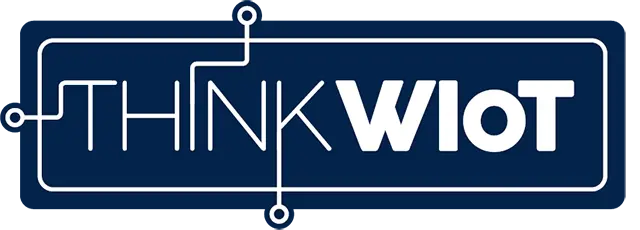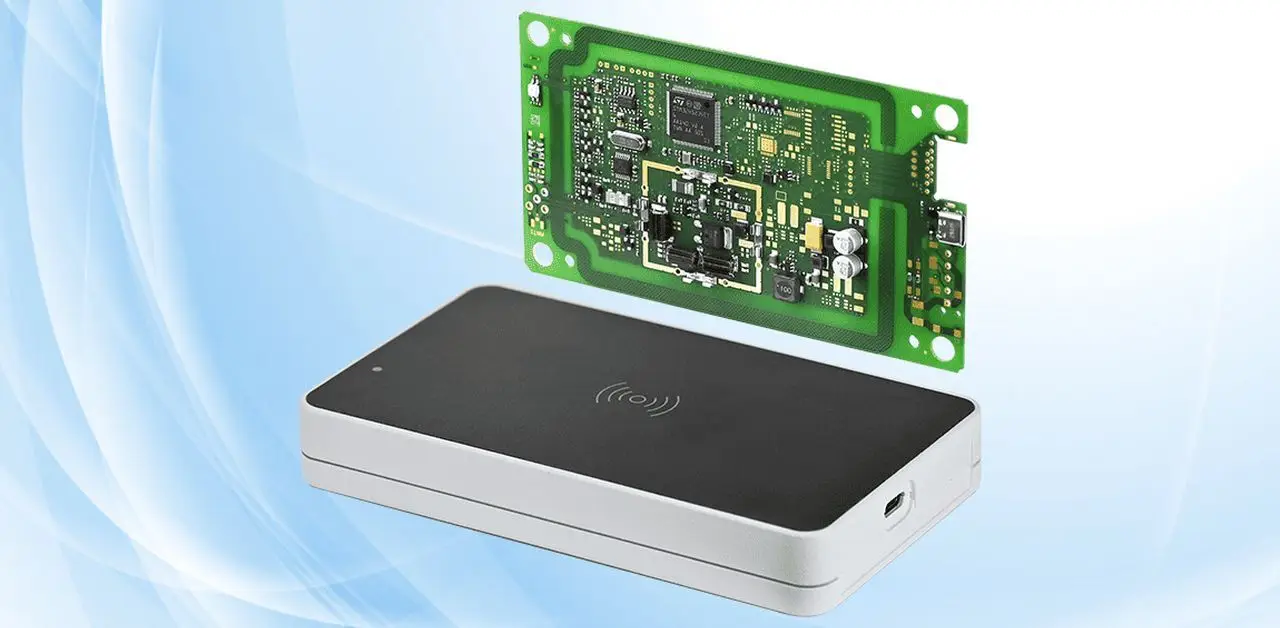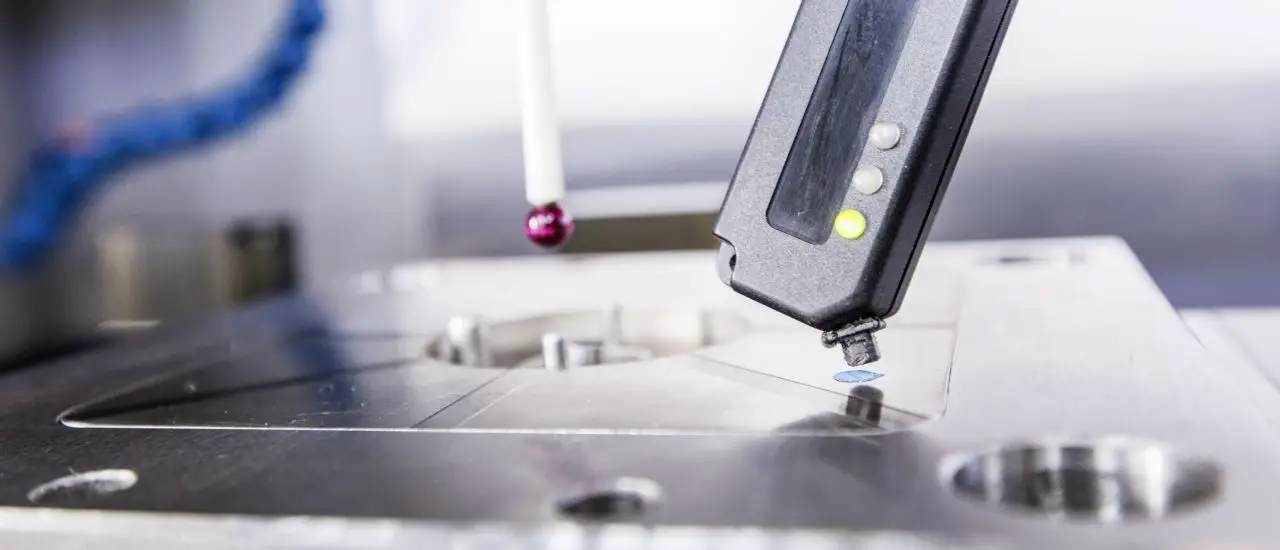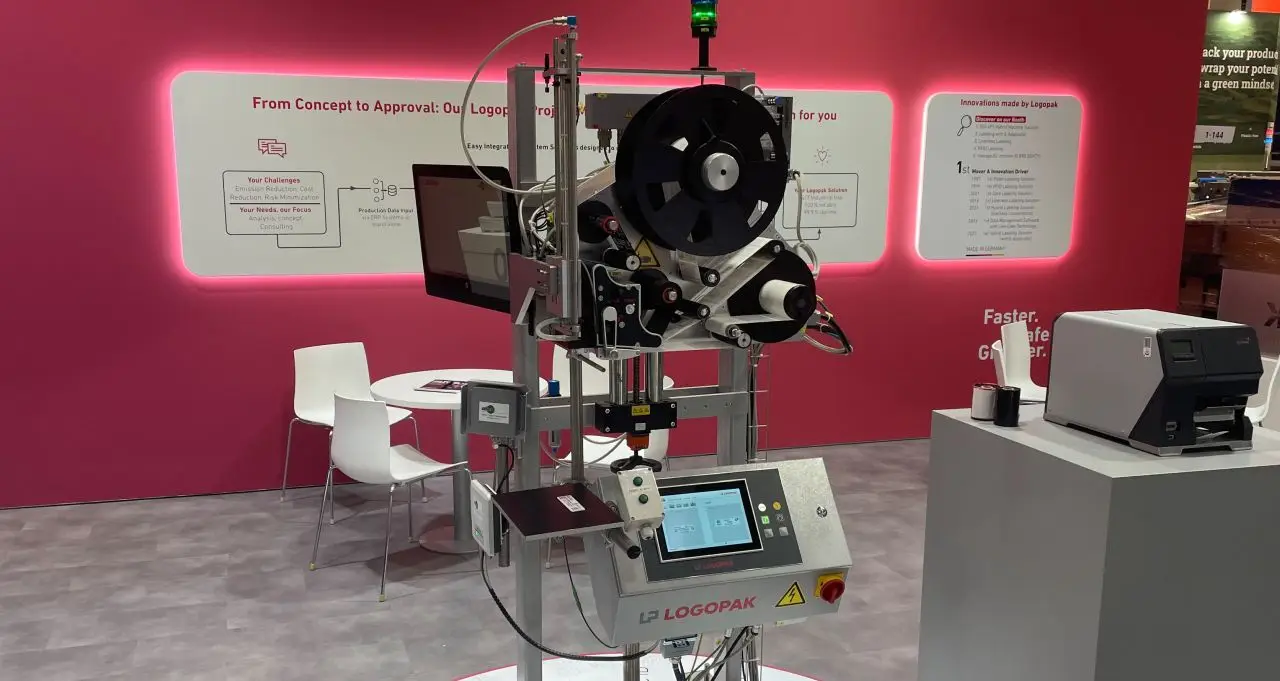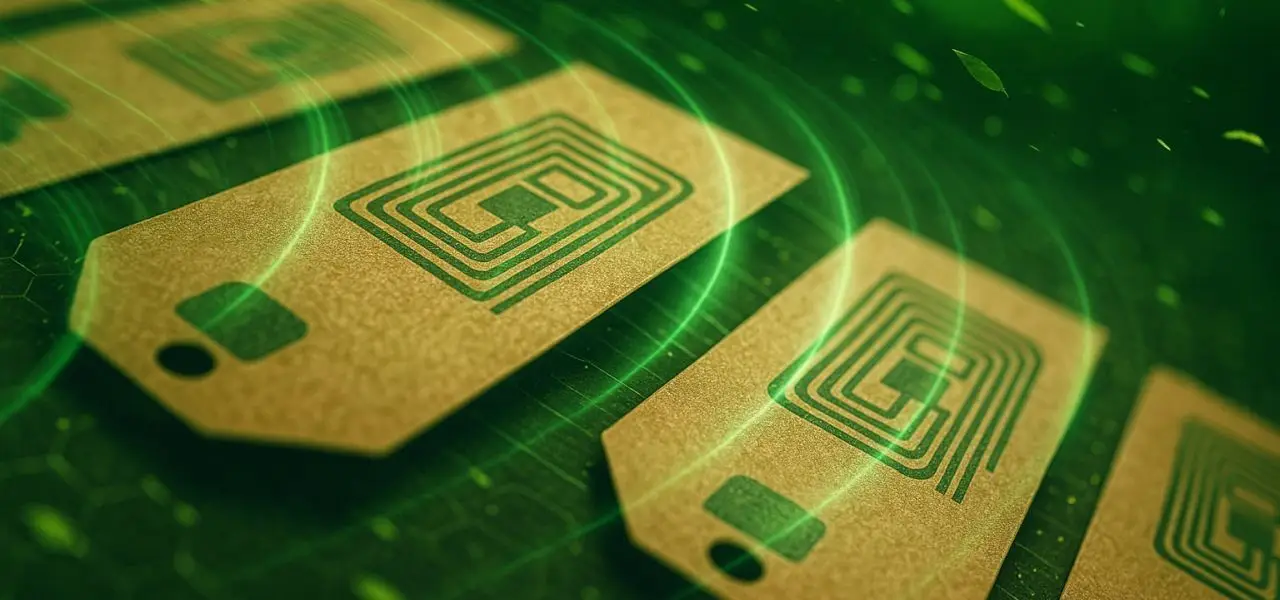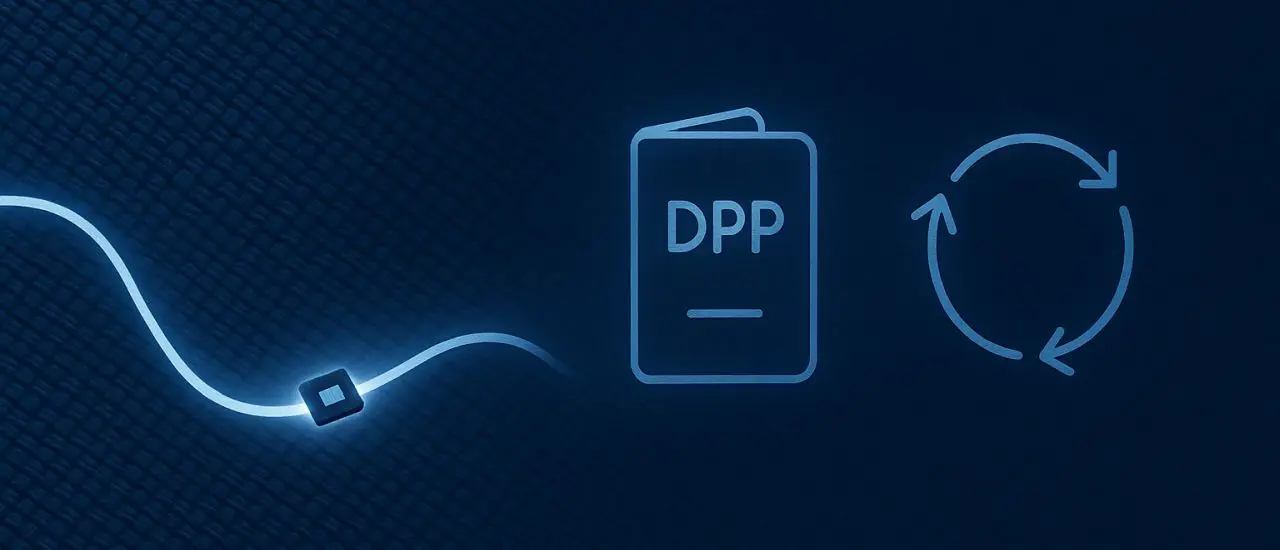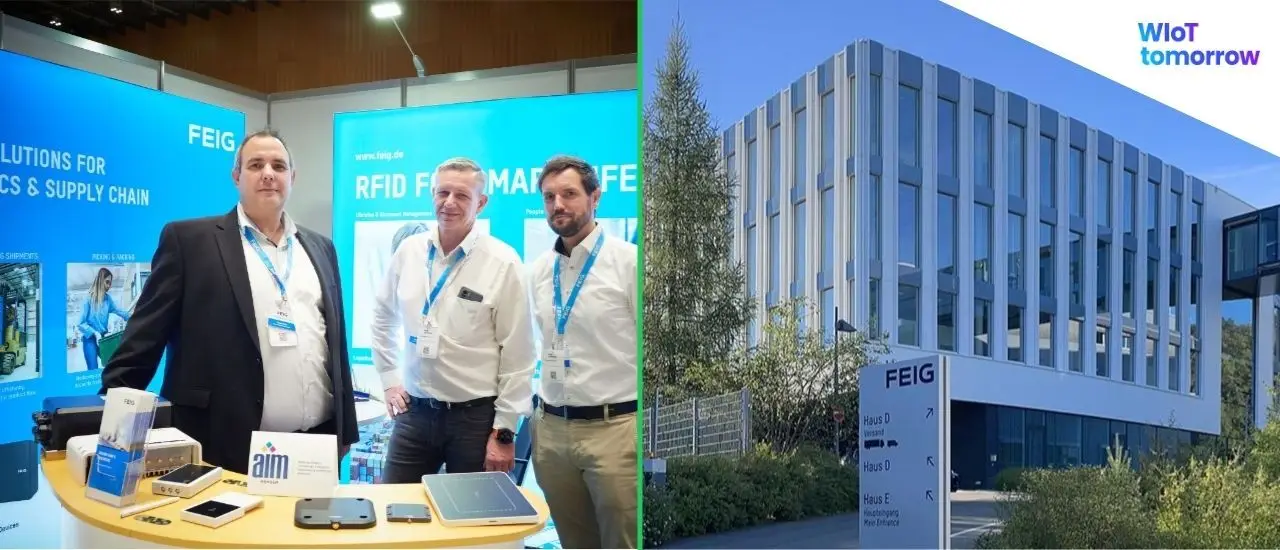- ID PR103-USB increases HF output and uses a redesigned integrated antenna for improved small-tag detection and more than 10% typical range increase versus PR101-USB.
- USB-C with USB 2.0 bus power enables plug-and-play connection without an external power supply.
- Mechanics, interfaces and configuration remain compatible with the PR101-USB for near 1:1 replacement in existing installations.
- The ID PRM103-USB module permits direct integration into devices and machines for OEM applications; both variants have been available since September 2025.
Weilburg, September 2025. FEIG ELECTRONIC is launching two compact HF RFID solutions for precise, contactless identification: the ID PR103-USB and the ID PRM103-USB reader module.
Both variants offer an integrated antenna, bus power via USB 2.0, and a typical reading range of up to approx. 20 cm – with a significantly lower height and noticeably higher HF performance than the classic ID ISC.PR101-USB. In addition , the mechanics, interfaces, and configuration remain fully compatible, allowing for a nearly 1:1 replacement in existing installations.
Key Facts
Successor to the PR101-USB: more compact, more modern, lower height.
More RF power + new antenna design: higher field strengths, reliable detection of small transponders, greater ranges.
USB-C socket & bus power (USB 2.0): easy connection without power supply.
New: ID PRM103-USB module variant for installation in devices/machines.
Available since September 2025.
What does "proximity" mean in the context of RFID?
Proximity means "close proximity/close range." A proximity reader such as the ID PR103-USB is designed for very short, clearly defined distances – typically a few centimeters to ~20 cm, depending on the tag, antenna, and power setting. This ensures controlled reading zones without unwanted triggers in the environment – ideal for desktop workflows and NFC.
The proximity feature is a key selling point of the PR103-USB: precise, reproducible detection directly at the workplace – without "long-range" detection.
What's new compared to the PR101-USB?
More performance in detail: Higher RF power and a revised antenna design deliver greater field strengths, reliable reading of very small tags, and noticeably greater range.
Design & construction: The housing is flatter and more compact; the USB-C socket contributes to the lower height.
Integration: Thanks to full compatibility with the mechanics, interfaces, and configuration of the PR101-USB, replacement is practically plug-and-play.
Increased range: In typical setups, an increase of > 10% can be achieved – especially with small transponders.
Typical applications of the RFID proximity table reader
The ID PR103-USB RFID proximity desktop reader is designed for precise close-range applications where controlled reading ranges are crucial. Thanks to HF technology, an integrated antenna, and bus power via USB 2.0, it is perfect for environments in which 15693 transponders (RFID tags according to ISO/IEC 15693) must be reliably detected. Typical application scenarios include:
1. Medical facilities and laboratories
Hygiene and precision play a central role in hospitals, laboratories, and doctors' offices. Here, the RFID table reader scores points with its defined reading field and its ability to reliably detect even the smallest RF transponders.
Application examples:
Sample tracking: Identification of blood or tissue samples in tubes and Petri dishes.
Device accessory recognition: Automatic recording of surgical instruments, medical attachments, and consumables to prevent errors.
Medication management: NFC tags on packaging enable complete documentation and prevent mix-ups.
Advantage of HF RFID technology:
HF signals are less affected by liquids than UHF signals – a decisive advantage in medical environments with a lot of liquids or metal instruments.
Daniel Büth: In the medical sector, the reader ensures the reliable, reproducible identification of even very small transponders on tubes, containers, and attachments—from microscopes to operating rooms. In libraries, it demonstrates its strengths at NFC desktop, checkout, and return stations. Our customers benefit overall from the compact design and reliable reading performance. The module variant simplifies in-device designs in machines and products – saving space and facilitating integration.
2. Libraries and educational institutions
The RFID proximity table reader is ideal for borrowing and returning books, magazines, or media. Thanks to the controlled reading zone, only items in the immediate vicinity are detected – false triggers from neighboring objects are avoided.
Application examples:
Return machines: Media are automatically detected upon return and credited to the user account.
Counter workstations: Library staff can capture multiple RFID tags simultaneously (anti-collision).
Inventories and stock control: Fast scanning of media stacks.
Media conversion: Encoding of transponders contained in the media according to data model.
Why HF instead of UHF?
In libraries, a limited range is advantageous in order to identify only the media on the reading surface and not books in the surrounding area.
3. Industry and logistics (NFC workflows)
In production and logistics environments, the ID PR103-USB serves as a stationary interface for RFID-supported processes.
Application examples:
Goods receipt inspection & quality assurance: Direct recording of products or components for documentation and approval.
Device pairing: Connection of machines with accessories or spare parts via RFID tag.
Parameter transfer: Production parameters or software updates are automatically transferred when NFC tags are placed on the device.
Service and maintenance processes: Service personnel can clearly identify devices and retrieve maintenance histories.
Advantage of HF technology:
HF enables precise, clearly defined reading ranges, allowing multiple stations to operate close to each other without interfering with each other.
Comparison: PR101-USB vs. PR103-USB / PRM103-USB
Criterion | PR101-USB | PR103-USB / PRM103-USB |
|---|---|---|
Antenna | Integrated | Integrated, redesigned (higher field strengths) |
HF performance / range | Solid, ~15 cm in many setups | > 10% more range, small tags more secure |
Design | Compact | Lower height, modern look |
Connection | USB-A (bus power) | USB-C socket & bus power |
Variants | Desktop reader | Desktop reader + module (PRM103-USB) |
Compatibility | – | Mechanics/interfaces/configuration compatible with PR101-USB |
Availability & Outlook
The ID PR103-USB and the ID PRM103-USB module have been available since September 2025. FEIG is thus consistently continuing its proximity line: more HF RFID performance, more compact, modularly integrable – and backward compatible with the long-standing classic PR101-USB.
Future-proof HF RFID solutions from FEIG
With the launch of the ID PR103-USB and the ID PRM103-USB module variant, FEIG is modernizing a proven device class that has been in use in many industries for almost 20 years.
The new RFID proximity desktop reader not only ensures controlled reading ranges, but also enables completely new workflows in industry, medicine, logistics, and libraries thanks to its higher HF performance and NFC compatibility.
The PR103-USB forms the basis for a future-proof RF infrastructure:
Backward compatibility with the ID ISC.PR101-USB protects existing investments.
The module variant opens up new possibilities for integrators and OEMs for direct device integration.
The USB standard keeps installation particularly simple and flexible.
Outlook for the product line:
FEIG plans to continuously develop the Proximity series in order to meet the increasing demands on RFID reading technology in the short range. The focus is on topics such as IoT connectivity, edge AI, and the integration of new security and authentication standards.
Conclusion:
With the ID PR103-USB, FEIG is setting a new standard in the field of HF RFID desktop readers – a compact, powerful, and future-proof solution for anyone who needs precise identification at close range.
Live at WIoT tomorrow: PR103-USB and prototype of the MR102 successor
With the launch of the ID PR103-USB and the ID PRM103-USB module variant, FEIG ELECTRONIC is modernizing a proven device class for precise short-range applications. But that's not all: at WIoT tomorrow in Wiesbaden on October 22 and 23, 2025, FEIG will provide an exclusive preview of the next generation of mid-range HF RFID readers.
As a highlight at the booth, visitors will be able to see the prototype of the successor to the ISO15693 mid-range reader ID MR102 for the first time. This upcoming device family is being developed specifically for applications that require longer read ranges than classic desktop readers—such as in libraries, industrial processes, or logistics workflows.
At a glance
Highlight: Preview of the next mid-range HF RFID reader family.
For whom: System architects, integrators, and decision-makers who want to evaluate future-proof, integration-friendly reading solutions.
Where & when: Wiesbaden, October 22–23, WIoT tomorrow – just a few minutes' walk from the main train station and about 30 minutes from Frankfurt Airport.


